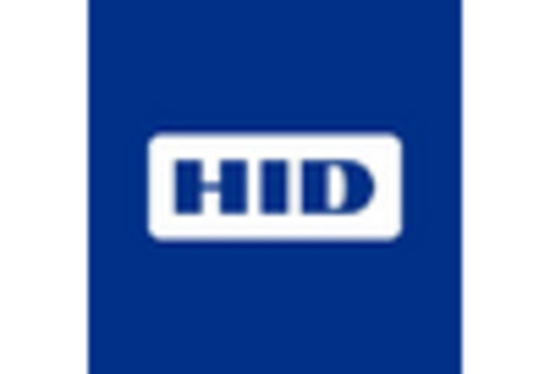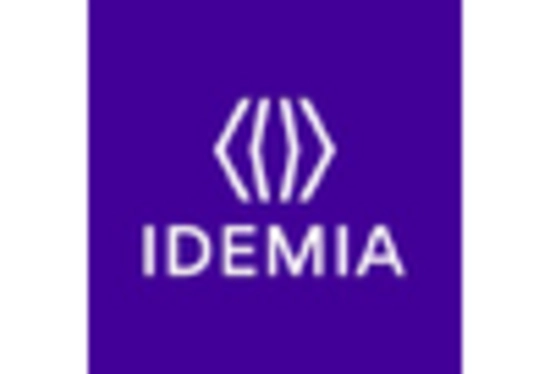Rising Cybersecurity Threats
The escalating threats posed by cybercriminals are a significant catalyst for the Biometric Smart Card Market. With the proliferation of digital transactions and online services, the risk of data breaches and identity theft has surged. Organizations are increasingly aware of the vulnerabilities associated with traditional authentication methods, prompting a shift towards biometric solutions. The biometric smart card market is anticipated to grow as businesses prioritize the implementation of advanced security measures to protect sensitive data. According to recent estimates, the cybersecurity market is expected to reach USD 300 billion by 2025, indicating a strong correlation between rising cybersecurity concerns and the demand for biometric smart cards.
Consumer Awareness and Acceptance
The growing awareness among consumers regarding the benefits of biometric authentication is influencing the Biometric Smart Card Market. As individuals become more informed about the risks associated with traditional identification methods, there is a noticeable shift towards embracing biometric solutions. This trend is particularly evident in sectors such as banking and travel, where consumers prioritize security and convenience. The increasing acceptance of biometric smart cards is likely to be fueled by successful implementations and positive user experiences. As more consumers advocate for secure and efficient identification methods, the demand for biometric smart cards is expected to rise, reflecting a broader societal shift towards enhanced security measures.
Government Initiatives and Regulations
Government initiatives aimed at enhancing national security and identity management are driving the Biometric Smart Card Market. Many countries are implementing regulations that mandate the use of biometric identification for various applications, including border control, voter registration, and social services. These regulations not only promote the adoption of biometric smart cards but also encourage investment in biometric technologies. As governments recognize the importance of secure identification systems, the market is likely to expand. The support from regulatory bodies can facilitate the development of standardized biometric solutions, further enhancing the credibility and acceptance of biometric smart cards in various sectors.
Growing Need for Identity Verification
The increasing necessity for robust identity verification mechanisms is a primary driver of the Biometric Smart Card Market. As organizations across various sectors, including banking, healthcare, and government, seek to enhance security protocols, biometric smart cards offer a reliable solution. The market is projected to witness a compound annual growth rate of approximately 15% over the next five years, driven by the rising incidences of identity theft and fraud. Biometric smart cards, which utilize unique biological traits for authentication, provide a higher level of security compared to traditional methods. This trend is likely to continue as more entities recognize the importance of safeguarding sensitive information, thereby propelling the demand for biometric solutions.
Technological Advancements in Biometrics
Technological innovations in biometric systems are significantly influencing the Biometric Smart Card Market. Advancements in fingerprint recognition, facial recognition, and iris scanning technologies have made biometric smart cards more efficient and user-friendly. The integration of artificial intelligence and machine learning into biometric systems enhances their accuracy and speed, which is crucial for real-time applications. As these technologies evolve, the cost of implementation is expected to decrease, making biometric smart cards more accessible to a wider range of industries. This trend suggests a potential increase in adoption rates, as organizations look to leverage cutting-edge technology to improve security measures and streamline operations.
















Leave a Comment